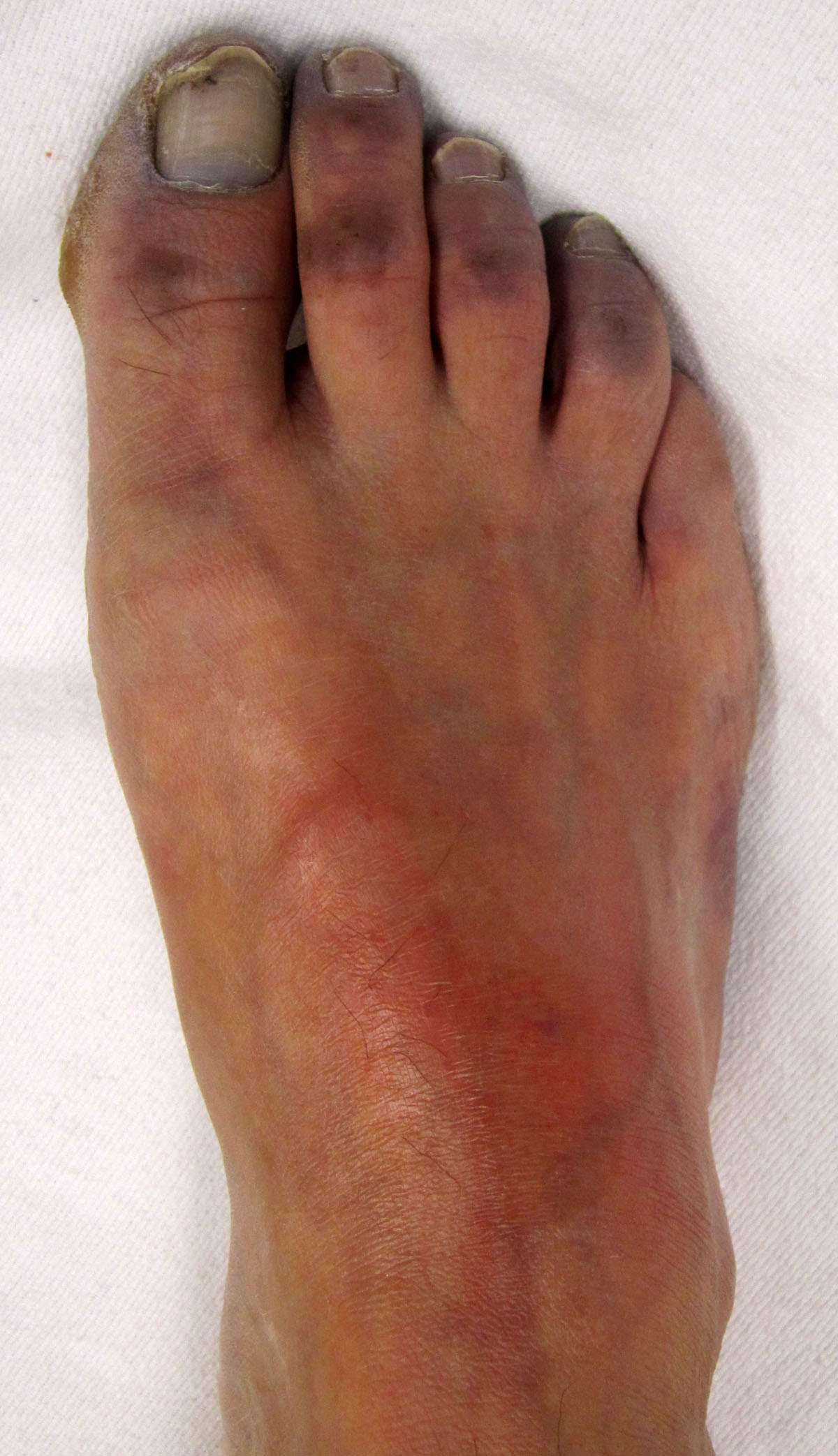
Cyanosis
Cyanosis is a symptom that features with blue discoloration of the skin and mucous membranes. The blue color is a consequence of the presence of too much deoxygenated hemoglobin. Low level of oxygen saturation causes cyanosis and this insufficient amount of oxygen in blood can be a consequence of numerous medical conditions.
Cyanosis can be classified into central and peripheral. In central cyanosis blue discoloration affects tongue, upper and lower lip. This condition results from certain heart and lung conditions that are connected to shunting of deoxygenated blood from the veins into arterial system. If a patient has central cyanosis he/she will also suffer from peripheral cyanosis. The symptoms and signs of central cyanosis include dyspnea and/or tachipnea. The lips and oral mucous membrane are purple. Peripheral body parts such as fingers and toes also feature with blue discoloration.
Unlike central cyanosis in peripheral cyanosis only peripheral body parts are blue. This refers to hands and feet. Additionally, they are cold to touch. This type of cyanosis develops in people who are suffering from peripheral Vasoconstriction and accumulation of the blood in peripheral blood vessels. Peripheral cyanosis is typical for congestive heart failure as well as circulatory shock or prolonged exposure to very cold temperatures.
Causes of Central Cyanosis in Neonates
In neonates central cyanosis can occur during childbirth, but it withdraws within few minutes after the birth. Still the symptoms and signs of peripheral cyanosis in these patients can linger for several days.
In neonates prolonged central or peripheral cyanosis can be caused by a variety of medical conditions. Congenital heart conditions are the leading cause of central and peripheral cyanosis in neonates. These children can also be cyanotic in case they are suffering from other diseases such as respiratory distress syndrome, asphyxia or aspiration of meconium, lung edema, congenital diaphragmatic hernia, accumulation of the fluid in pleura, and so on. Apart from the previously mentioned even seizures, infections or metabolic imbalance can lead to cyanosis.
Causes of Central Cyanosis in Adults
In adults central cyanosis is caused by majority of acute and chronic respiratory conditions. Abnormalities in hemoglobin may also result in central cyanosis. Cardiac shunt in which the blood passes from right part of the heart into left can also lead to cyanosis. And finally, cyanosis is only one of the many symptoms of polycytemia rubra vera.
Causes of Peripheral Cyanosis
Peripheral cyanosis is evident in all the patients who are suffering from central cyanosis. Insufficiency of heart muscle is another cause of peripheral cyanosis. Excessive Vasoconstriction can also lead to this type of cyanosis. Even if arteries or veins get blocked the patient will develop peripheral cyanosis.

















Your thoughts on this
Loading...